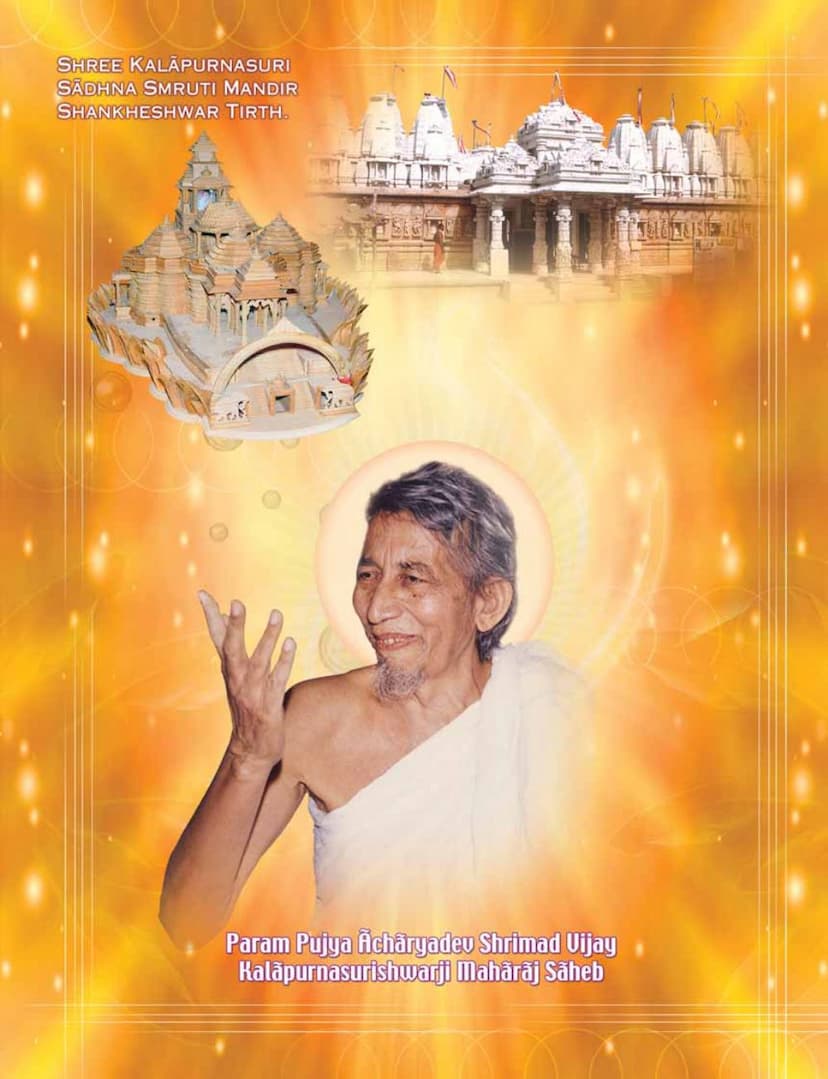Picturisation Of Hell
Added to library: September 2, 2025

Summary
Here's a comprehensive summary of the Jain text "Picturisation of Hell" by Vimalprabhvijay, based on the provided pages:
Overall Purpose: The book, "Picturisation of Hell," by Vimalprabhvijay, serves as a visual and descriptive guide to the consequences of negative actions and sinful behaviors in the Jain context. It aims to illustrate the torment and suffering experienced in hellish realms, thereby encouraging individuals to adhere to Jain principles and lead a virtuous life. The author expresses gratitude to their parents and guru, highlighting the importance of spiritual guidance and the pursuit of self-improvement.
Core Themes and Content:
The book systematically details various categories of actions that lead to rebirth in hellish realms, accompanied by visual depictions (though not present in the text provided, the descriptions imply them). These actions are categorized based on their moral and ethical implications within Jainism.
Categories of Sins and Their Consequences:
- Devotion and Religious Practice:
- Page 3: Worship based on affection, aversion, and imitation. Serving preceptors with insincere words and worldly desires. Liking, listening to, and obeying false scriptures.
- Sexual and Moral Lapses:
- Page 3-4: Indulging in prostitution, being constantly absorbed in sexual thoughts and conversations.
- Page 11: Administering poison, being engrossed in lustful thoughts, and trapping others in sexual entanglements.
- Page 12: Sensual indulgence and harassment of innocents.
- Page 16: Burning women alive, engaging in shameless amorous gestures.
- Page 17: Performing abortions and causing them.
- Page 19: Obsession with wealth, land, and women, leading to conflict.
- Page 20: Engaging in sexual relations with other people's women, shameless indulgence in sex and sensual pleasures.
- Violence and Harm to Living Beings (Himsa):
- Page 4: Oppressing others, causing intrigues and quarrels, oppressing servants.
- Page 6: Cutting green trees and destroying plant life, hoarding grain.
- Page 9: Killing innocent animals (butchers), dealing in fish and poultry, hunting birds.
- Page 10: Slaughtering innocent animals, dealing in fish and poultry.
- Page 11: Committing violence even after being skilled in warfare, freezing, slaughtering, piercing, throwing others, and constantly thinking of violence, taking an oath to kill, administering poison, piercing other creatures.
- Page 12: Crushing oilseeds, operating water-drawing wheels and grinders.
- Page 13: Killing serpents, scorpions, trapping birds, oppressing the mentally afflicted, poor, and miserable.
- Page 14: Tormenting serpents, crushing small insects, preachy sin.
- Page 15: Killing serpents, scorpions, trapping birds, mothers-in-law torturing daughters-in-law, burning women alive, eating at night.
- Page 16: Picking quarrels and harassing others, sterilizing and overpowering cattle, overloading animals, slaughtering animals and birds, catching and eating fish.
- Page 18: Terrorizing and burning alive others, hindering religious rites, misusing human life by engaging in anti-religious activities.
- Page 20: Killing others, hitting others fatally, piercing other creatures.
- Deception and Dishonesty:
- Page 4: Oppressing others on gaining power, causing intrigues through betrayal, oppressing servants, accumulating karma through sinful activities like building furnaces, malpractices in trade (giving less than what's paid for).
- Page 7: Criticizing others, slandering, betraying, back-biting, cheating gullible people through hypocrisy, manipulating account books to cheat the poor, displaying superior goods but delivering inferior ones, charging more for inferior goods, misusing religious property wealth, deceiving traders, goldsmiths engaging in fraud and deception, hoarding grain, brokering stolen goods.
- Page 8: Taking others' property, not giving alms or preventing others from giving, eating non-vegetarian food, giving false statements in court.
- Page 13: Not giving alms and hindering others from giving.
- Page 14: Lying, being cruel, giving orders for ruthless torture.
- Disrespect and Neglect:
- Page 5: Abusing and avoiding parents, considering parents as fools and hurting their self-respect.
- Page 6: Physically assaulting one's husband, becoming arrogant due to power.
- Page 11: Lacking discrimination between drinkable and non-drinkable substances.
- Page 14: Committing sins with hands and legs.
- Page 20: Not paying obeisance to Arihantas, Siddhas, and Sadhus.
- Vices and Bad Habits:
- Page 9: Committing suicide, bullying, consuming alcohol and intoxicating drinks.
- Page 14: Result of laziness and indolence.
- Page 15: Addiction to gambling and other vices, wasteful use of unfiltered water, ruthless violence through germicides.
- Page 16: Eating at night.
- Page 18: Result of false beliefs and passions.
- Page 19: The river Vaitarni, full of impurities, symbolizes the torments.
- Page 20: Smoking, drugs, TV, eggs, non-veg, abortion, paramour.
- Specific Examples of Hellish Torments:
- The text describes various punishments such as being pierced with spears, burned, crushed, and subjected to immense suffering for their earthly transgressions.
- The concept of vendetta continuing even in hell is mentioned.
- Warning Against Modern Vices:
- Page 20: A strong emphasis is placed on avoiding modern vices like smoking, drugs, and excessive television consumption. It highlights the detrimental effects of these habits on individuals and society, even quoting statistics on deaths related to smoking. It also stresses the negative impact of television on children's minds and advises proper guidance. The consumption of eggs is also condemned, stating that every egg contains life.
Author's Dedication: The author, Vimalprabh Vijayji, dedicates the book to the memory of Khandor Keshavlal Lalchandbhai and Khandor Ratenben Keshavlal, expressing a profound sense of gratitude for their love, education, and the spiritual path they enabled him to pursue.
Overall Message: "Picturisation of Hell" is a cautionary text designed to impress upon the reader the severe consequences of unrighteous actions in Jainism. By vividly depicting the suffering in hell, it serves as a powerful motivator for individuals to cultivate virtuous conduct, practice compassion, and adhere to the ethical guidelines of Jainism, thereby ensuring a better future in this life and the next.